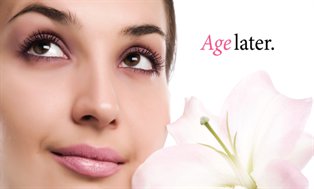BusinessTrends-2013....Targeting
the beauty seekers
When it comes to anti-aging solutions, beauty seekers are
starting to thumb their noses at injections in favor of
"cosmeceuticals," personal-care products with hypothetical
skin-enhancing ingredients.
Market research group IBISWorld estimates that
cosmeceuticals accounted for 13.4 percent of the $54.9 billion extensive cosmetics
and beauty-products market in 2012--a monstrous $7.4 billion. Another exploration
firm, Freedonia Group, predicts that stipulate for cosmetic chemicals will jump
4.9 percent per year to reach $9.4 billion by 2016.
This growth will be determined by products publicity
"active and natural" ingredients like rice-enzyme powders and tropical
forest plant extracts, such as those from Lily Herbceuticals--which uses unusual
ingredients like the Tibetan Snow Lotus, a flower that survives in the
Himalayas at 21,000 feet above sea level and 70 degrees underneath zero--and
Personal Cell Sciences' U Autologous, a skincare line that incorporates
customers' own stem cells in the overhaul of anti-aging.
Dan Obegi, CEO of Los Angeles-based DermStore, the leading
e-tailer of physician-strength skincare products, agrees. "There's new
demand as beauty influencers and tastemakers get older and become more concerned
in these types of products," he says. Derm-Store has observed annual
growth of 50 percent for the last three years. Its parent company, Intelligent
Beauty, which expects 2012 proceeds of $450 million, has introduced a
cosmeceutical incline into other verticals, such as shampoos that treat split
ends.
Katia Beauchamp, co-founder and co-CEO of Birchbox, a New
York City-based discovery shopping service for beauty, grooming and lifestyle
products, says that no subject the age of the consumer, spending is trending
toward higher-performance products. A recent company survey discovered that BB
creams--all-in-one products that work as a, primer ,moisturizer, serum,
foundation and sunblock and were initially developed to protect skin after
cosmetic surgery--are now finding conventional use as a daily skincare option
and are most popular among the under-21 set. And let's not forget the ever-growing
opportunities in the racial and male-grooming markets, worth $3 billion and
$2.6 billion, correspondingly, by some counts.

No comments:
Post a Comment